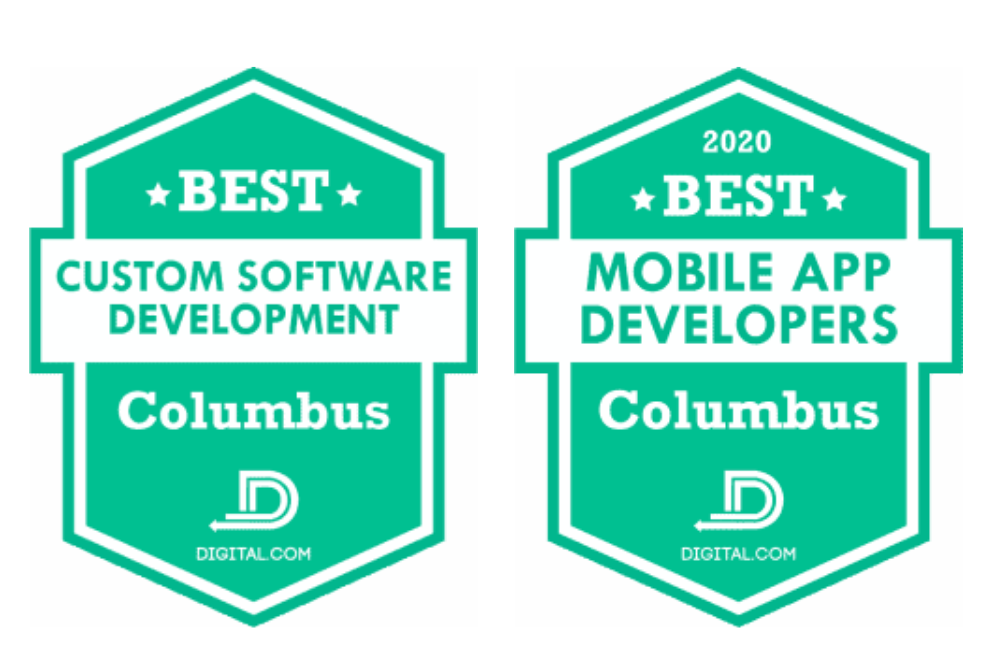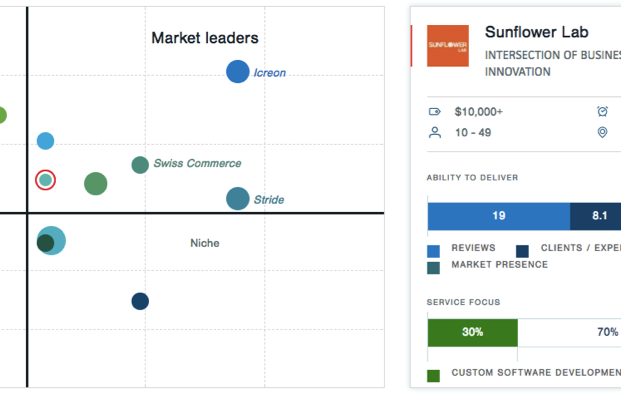Starting with a Strategy
Once you make the decision to adopt robotic process automation, it can be hard to resist jumping right in; the thought of automating your most boring, repetitive tasks is so exciting! But we’re here to encourage you to pump the breaks and begin your automation with an RPA strategy. Being strategic about your approach to implementing robotic process automation into your workflow(s) will be your blueprint from the discovery phase, all the way to digital transformation.
What is an RPA Strategy
An RPA strategy is a comprehensive plan for how an organization will implement RPA into its workflows. Adopting RPA without a well-intentioned plan will result in misaligned expectations, skill shortcomings, and other pitfalls that could take away from the success of your automation. Your RPA strategy should focus on 3 key elements of your business: people, processes, and technology. This will help illuminate your employee skills, your customer needs, your workflows, and your IT capabilities. Combined, these elements drive your business outcomes.
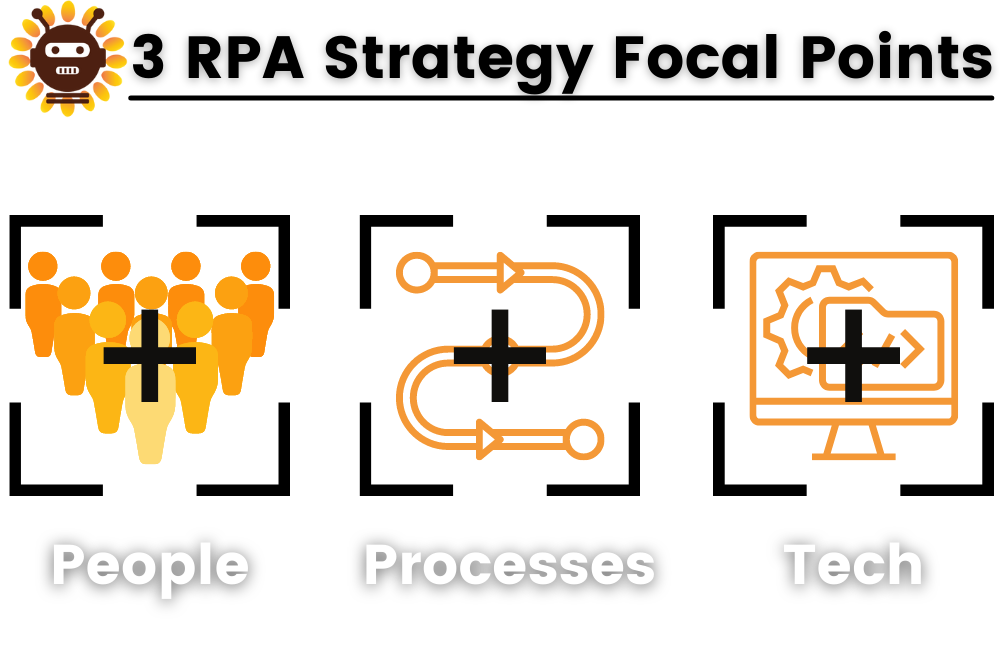
4 Essential Elements of an RPA Strategy
Now that we’ve established that your people, process, and tech will help drive your strategy, it’s time to establish the components of the strategy. Four essential elements are necessary to ensure your automation plan reaches its full potential:
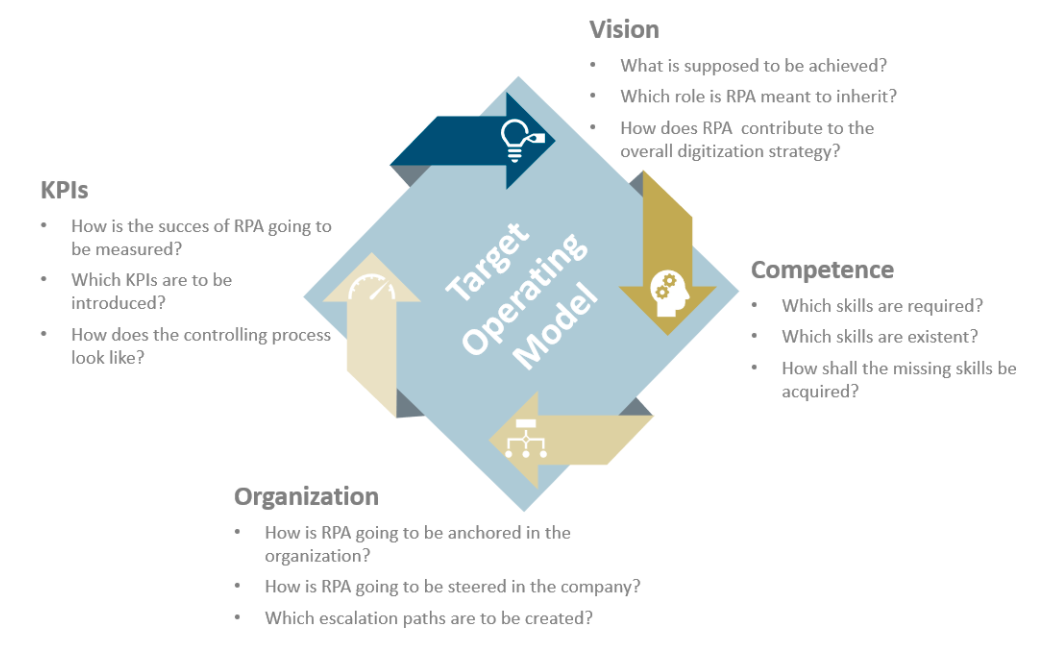
Vision
A clear vision will lay a solid groundwork for your RPA strategy. This will help define your expectations of the robotic process automation and align them with your colleagues. Business leaders should ask themselves, “What are we trying to achieve with RPA?”
Competence
Robotic process automation requires a certain number of skills to be successful. That is why organizations need to know the possibilities and limitations of their current competencies. An important question to ask during this phase is, “What skills are required for robotic process automation, and how can we acquire skills that are missing from our team?”
Organization
The organizational aspect of an RPA strategy requires leadership to delegate management of the automation. Companies can opt to manage their RPA centrally (Center of Excellence), or disperse responsibilities (Grassroots). The most important question to answer is, “Who will manage the RPA?”
KPIs
Before investing in robotic process automation, executives will want to know the ROI for RPA. This is just one of the important metrics you’ll need to measure in order to determine the success of your RPA strategy. Key performance indicators (KPIs) will help answer the question, “How will the success of RPA be measured?”
Why You Need an RPA Strategy
We’ve already discussed why you should adopt RPA, but now it’s time to get into why you need an RPA strategy. You need an RPA strategy because it will be the blueprint to your entire digital transformation journey. It’s easy to launch a single software bot to complete a few rule-based tasks, but in order for your project to be truly effective, you need a strategy. Here’s why:
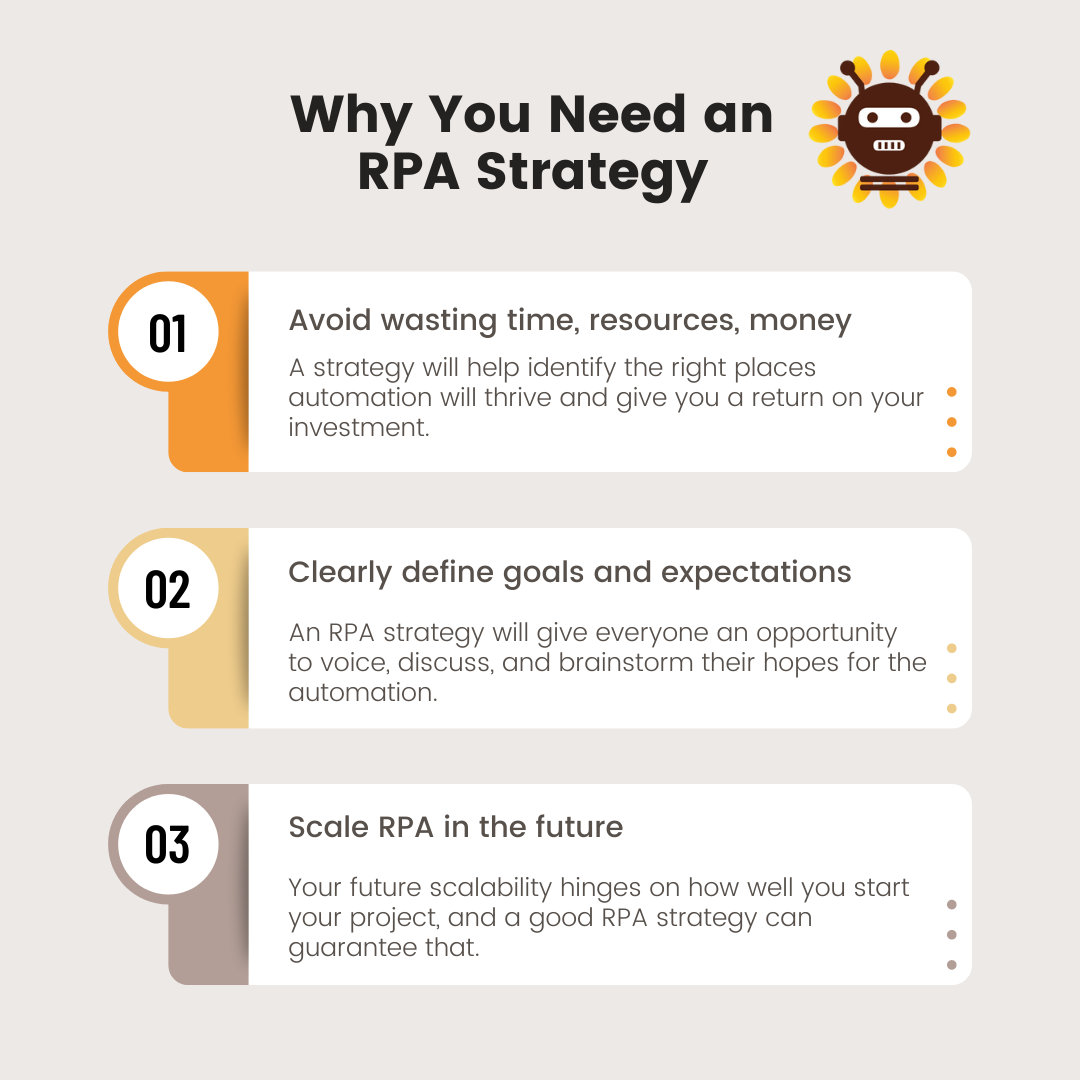
Avoid wasting time, resources, money
Let’s face it: you’re probably not an automation expert. That means you may not know exactly how to incorporate robotic process automation into your workflows. This could lead you to investing valuable time, resources, and cash into something that won’t succeed. Implementing RPA where it isn’t needed or where it doesn’t deliver the most value is a wasted opportunity and a waste of your money. A strategy will help identify the right places automation will thrive and give you a return on your investment.
Clearly define goals and expectations
Business automation is a very exciting prospect for an enterprise. Everyone will have their own ideas about what they expect from the endeavor. But unless you come together on shared goals, there will be those left unsatisfied. An RPA strategy will give everyone an opportunity to voice, discuss, and brainstorm their hopes for the automation. At the end, the strategy should reflect company-wide, agreed-upon goals.
Scale RPA in the future
When it comes to business automation, the sky is the limit. The expansion possibilities can be at your fingertips if you incorporate scalability into your RPA strategy. This includes establishing a solid foundation and competencies, as well as empowering your entire organization to embrace automation from the very beginning. Remember: your future scalability hinges on how well you start, and a good RPA strategy can guarantee that. Speaking of the future…
Long-Term RPA Strategy
Adopting robotic process automation is a big step, but your RPA strategy should take you to higher heights. Your long-term RPA strategy should incorporate the ideology of digital transformation: a movement to modify existing business processes to meet the needs to today’s digital age. This concept marks the reimagining of the way we do our jobs and engage with customers. While robotic process automation is the first step in achieving digital transformation because it is a simple automation that returns positive results quickly, it is only the beginning.
In order to extend the horizons of the automation, more digital transformation technologies need to be incorporated. Intelligent process automation, or intelligent automation, or IA exists to accelerate the technology transformation journey. Intelligent automation is the combination of RPA with advanced technologies such as artificial intelligence (AI), optical character recognition (OCR), cognitive technologies, computer vision, etc. With the help of intelligent automations and use of analytics, we can have solutions with automated decisions providing more flexibility to the end-to-end automation.
Creating Your Own RPA Strategy
We know that strategizing is certainly not as satisfying as witnessing your software robot complete its first task. But, as you can see, developing an RPA strategy is crucial to your automation achieving success. Taking the time to scope out the aspects of your project—your vision, competence, organization, and KPIs—it will help you avoid wasting time and money, define your goals, and scale your strategy for the future.
Sunflower Lab has multiple locations to better serve our clients. Robotic process automation services Columbus, Ohio, robotic process automation services New Jersey, and robotic process automation services New York all designed specifically to accommodate the needs in each unique market. Reach out to one of our RPA specialists today to know more about our Robotic Process Automation Services.
You might also like
Stay ahead in tech with Sunflower Lab’s curated blogs, sorted by technology type. From AI to Digital Products, explore cutting-edge developments in our insightful, categorized collection. Dive in and stay informed about the ever-evolving digital landscape with Sunflower Lab.




